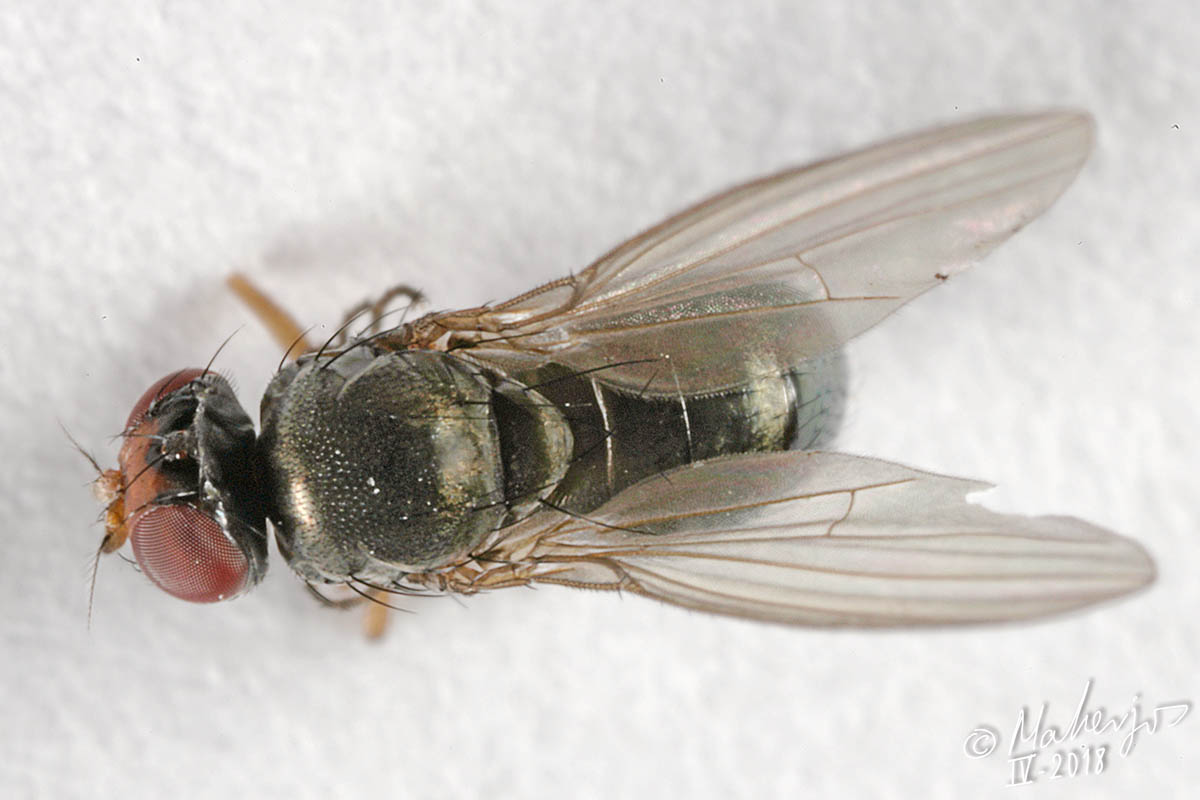Diptera.info :: Identification queries :: Diptera (adults)
Who is here? 1 guest(s)
|
Camillidae OK.
|
|
| Maherjos |
Posted on 28-04-2018 10:09
|
|
Member Location: Motril (Granada) España Posts: 2349 Joined: 02.09.09 |
Photograph taken on 27 April 20187 in terrace housing in urban areas, Motril, Granada, Spain. Immediate area of the Mediterranean coast. Apparent size with wings, about 3,5 - 4 mm Click over the image increases in size Thanks in advance for any help! Maherjos attached the following image:  [137.38Kb] Edited by Maherjos on 03-05-2018 20:00 |
|
|
|
| Maherjos |
Posted on 28-04-2018 10:09
|
|
Member Location: Motril (Granada) España Posts: 2349 Joined: 02.09.09 |
.
Maherjos attached the following image:  [114.33Kb] |
|
|
|
| Paul Beuk |
Posted on 30-04-2018 17:59
|
|
Super Administrator Location: Netherlands Posts: 19383 Joined: 11.05.04 |
Could it be Camillidae?
Paul - - - - Paul Beuk on https://diptera.info |
| Maherjos |
Posted on 01-05-2018 15:36
|
|
Member Location: Motril (Granada) España Posts: 2349 Joined: 02.09.09 |
Paul Beuk wrote: Could it be Camillidae? Thank! I have the copy to be able to provide photographs of other details that help identify them. |
|
|
|
| Ectemnius |
Posted on 01-05-2018 17:22
|
|
Member Location: The Netherlands Posts: 847 Joined: 22.11.11 |
Hello Maherjos, Yes, it is a Camillidae as indicated by the costal spines. No similar looking Ephydridae share that feature as far as I know. (or Paul might disagree?) Unfortunately in Europe several species of Camilla are known with completely orange legs and they can only be identified reliably by the male terminalia. The most common one is Camilla flavicauda, but on the Iberian peninsula there is also C. kynodontia and C. sabroskyi, which have the entirely yellow legs. As your specimen is a female... Kind regards, Ectemnius Edited by Ectemnius on 02-05-2018 10:08 |
|
|
|
| Maherjos |
Posted on 03-05-2018 09:13
|
|
Member Location: Motril (Granada) España Posts: 2349 Joined: 02.09.09 |
Ectemnius wrote: Hello Maherjos, Yes, it is a Camillidae as indicated by the costal spines. No similar looking Ephydridae share that feature as far as I know. (or Paul might disagree?) Unfortunately in Europe several species of Camilla are known with completely orange legs and they can only be identified reliably by the male terminalia. The most common one is Camilla flavicauda, but on the Iberian peninsula there is also C. kynodontia and C. sabroskyi, which have the entirely yellow legs. As your specimen is a female... Kind regards, Ectemnius Ectemnius, in any case, I am very grateful for your help and explanations. I hope to be lucky at least to find a male specimen in the future.  Cordial greetings from the south of Spain. José Marín (Maherjos) |
|
|
|
| Jump to Forum: |















